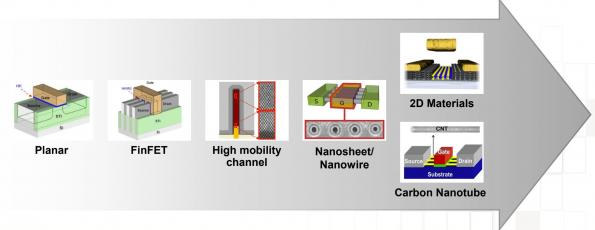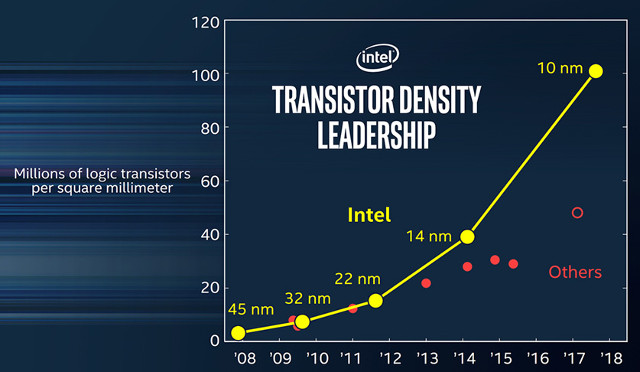Intel has a mixed history with its ability to keep production schedules for new processes, with notably its 10nm process suffering from years of delays before finally being deployed into chips. But the US company has now held an event unveiling the process & package roadmap through 2025 and beyond, which includes 7nm, 4nm, 3nm, and even the switch the angstrom scale (1A = 0.1 nm) with a 20A process expected in 2024/2025. Intel Process roadmap to 2025 and beyond On the process node sides of things, here’s what to expect in the next few years: Intel 7 delivers 10% to 15% performance-per-watt improvements, and will be found in Alder Lake for client in 2021 and Sapphire Rapids for the data center, with the latter expected to be in production in Q1 2022. Intel 4 promises a 20% performance-per-watt increase over Intel 7, and is the first Intel FinFET node […]
TSMC to Start Mass Production of 3nm Chips in 2022
TSMC provides an update to its process technology roadmap at the Online Technology Symposium and OIP Ecosystem Forum with the 5-nanometer (N5) technology having entered mass production earlier this year, and an enhanced N5P version coming in 2021 offering further speed gain and power improvements, followed by N4 process (also 5nm) starting “risk production” in Q1 2021. But the most interesting part was looking ahead to 3nm and 2nm process technologies. TSMC’s N3 (3nm) process aims to provide a 15% performance gain, up to 30% power reduction, and logic density gains up to 70% over N5. N3 will rely on 13.5nm extreme UV (EUV) technology and be first used by UK based AI chip designer Graphcore. Their current AI chip – Colossus Mk2 Intelligence Processing Unit (IPU) – is built on 7nm with 59.4 billion transistors, and the next 3nm chip should have over 100 billion transistors. Anandtech managed to […]
Intel: My 10nm Process is Denser Than Yours
Process technology is important as the lower the process node, the more efficient the processor becomes, which leads to either longer battery life for the same tasks on battery powered devices, or allows for higher frequencies extracting more performance. Qualcomm and Samsung recently announced Snapdragon 835 SoC was manufactured using 10nm process technology, but Mark Bohr, an Intel Senior Fellow and director of process architecture and integration at Intel Corporation. wrote a blog post explaining that while in the past process node size and density were progressing in a “linear” fashion, this is not the case anymore, as marketing has changed, and some companies advance node names, even in cases where there’s minimal or no density increase. The chart above implies that some companies 10nm process is barely better than Intel’s 14 nm process, with their 10nm process capable of integrating about twice as much transistors per square millimeter compare […]
How to check open files for a process
While debugging your program, you may encounter the message “Too many open files”. One way to fix the issue could be to review your code and check open, fopen, socket and pipe calls are matched with close and fclose calls, but with large projects this may be cumbersome. A better way is to list the open files using the proc filesystem. I’ll use VirtualBox program as an example since this is running in our server. First, locate the process ID (PID): pgrep VirtualBox 3901 3950 Then list the file descriptor opened for process 3901 sudo ls -l /proc/3901/fd total 0 lrwx—— 1 root root 64 2010-10-05 14:52 0 -> /dev/pts/1 lrwx—— 1 root root 64 2010-10-05 14:52 1 -> /dev/pts/1 lr-x—— 1 root root 64 2010-10-05 14:52 10 -> pipe:[15825] l-wx—— 1 root root 64 2010-10-05 14:52 11 -> pipe:[15825] lr-x—— 1 root root 64 2010-10-05 14:52 12 -> pipe:[15829] […]






